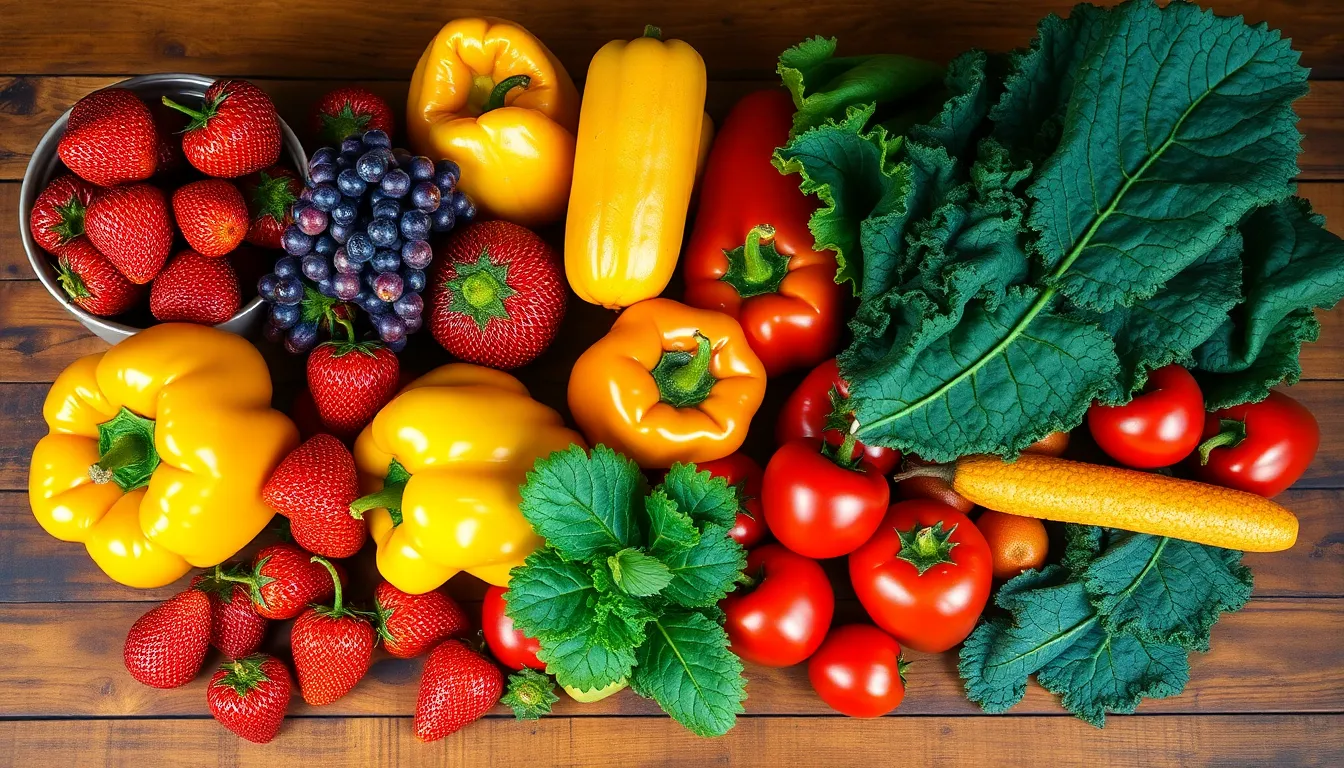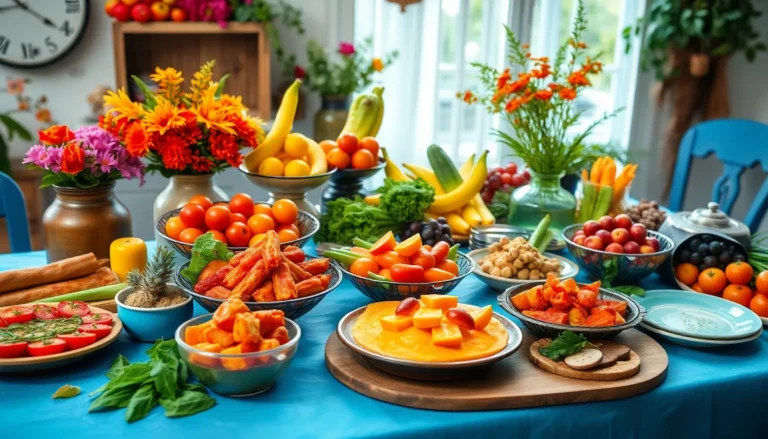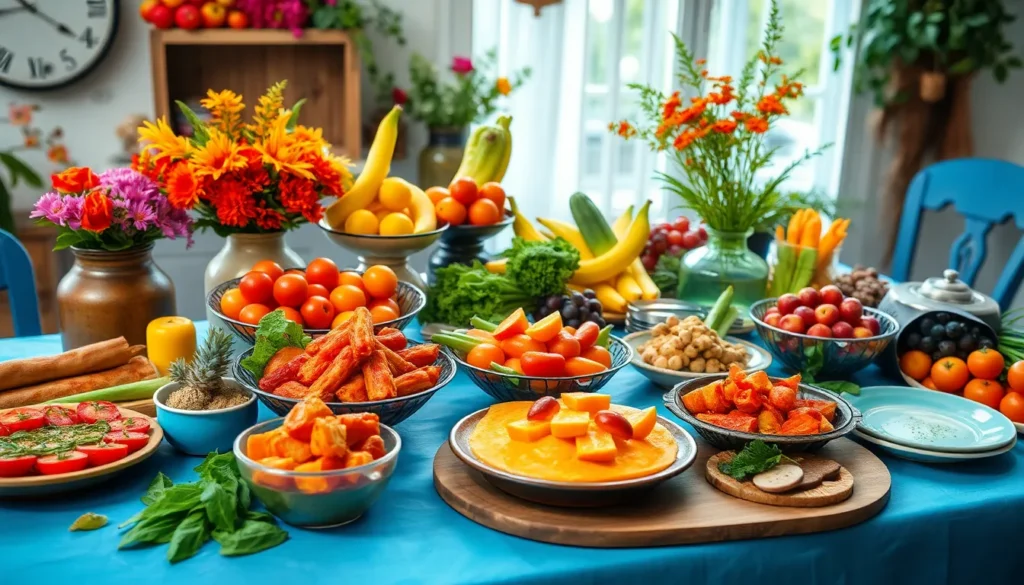Table of Contents
ToggleFood isn’t just about taste; it’s a visual feast that can tickle the senses and ignite the appetite. Ever noticed how a vibrant plate of food can make even the pickiest eater drool? Colour plays a crucial role in our culinary experiences, influencing everything from cravings to perceptions of flavor.
In the world of food, it’s not just what’s on the plate but how it looks that counts. Whether it’s the deep red of a ripe tomato or the sunny yellow of a perfectly cooked egg, these hues can transform a simple meal into a masterpiece. Dive into the fascinating world of food colour and discover how it affects our enjoyment, health, and even our mood. Who knew that eating could be as much about art as it is about sustenance?
Understanding Colour in Food S-40533E1(EXW)
Colour significantly impacts food perception and enjoyment. It serves as a vital indicator of freshness and ripeness, aiding consumers in making choices. Bright colors often signal richness in nutrients, enticing individuals to indulge. Studies indicate that people generally associate vibrant hues with better tastes, altering how they experience flavors.
Natural pigments play a crucial role in food products. Carotenoids, for instance, are responsible for orange and yellow shades in fruits and vegetables. Anthocyanins contribute to reds and purples, found in berries and red cabbage. These pigments not only enhance appearance but also offer health benefits, such as antioxidants.
Consumers frequently engage with food through its color. Dishes with diverse colors tend to attract attention, making meals visually appealing. Moreover, research shows that meals presented attractively increase overall satisfaction and enjoyment. A well-balanced plate of color encourages healthier eating habits, promoting the consumption of various food types.
Food manufacturers leverage colour as a marketing tool. Bright, appealing packaging can influence purchasing decisions, drawing customers to particular products. Items that utilize natural colors often receive favorable reviews due to perceived authenticity and healthiness. The culinary industry acknowledges this impact, creating trends around colorful dishes, emphasizing how presentation elevates dining experiences.
Incorporating a spectrum of colors in meals can foster positive associations, enhancing the enjoyment of food. The art of plating plays a critical role in dining, making meals aesthetically pleasing while delivering nutritional variety. An appreciation for vibrant colors can transform meals into delightful experiences that nourish both body and spirit.
The Science Behind Food Colouring

Understanding the science behind food coloring reveals its significance in culinary experiences. Color enhances visual appeal and can even stimulate appetite.
Natural vs. Artificial Colouring
Natural coloring comes from plant extracts and minerals. Carotenoids and anthocyanins represent common examples of natural pigments used in foods. These pigments contribute not only color but also potential health benefits. Artificial coloring, on the other hand, includes synthetic dyes designed to enhance appearance and shelf stability. Consumers often prefer natural options due to health concerns and a desire for clean eating. Regulations govern both types of coloring, ensuring consumer safety. Each type plays a role in food aesthetics and perception.
Impact of Colour on Flavour Perception
Color shapes expectations regarding flavor. Studies show that vibrant hues can suggest sweetness or freshness, influencing taste perception. For instance, red foods often evoke feelings of sweetness, while green foods might suggest bitterness. Changing the color of a dish can alter its perceived flavor without any actual change in taste. This connection highlights color’s psychological effects on dining experiences. Additionally, chefs utilize color strategically to create a more appealing and enjoyable meal. Color serves as a cue, guiding consumers’ expectations and enhancing overall satisfaction.
Benefits of Using Colour in Food S-40533E1(EXW)
Colour in food S-40533E1(EXW) plays a crucial role in enhancing the overall dining experience. The visual elements of food not only attract attention but also enrich the perception of taste.
Enhancing Visual Appeal
Bright colours grab attention on the plate and elevate the aesthetic quality of dishes. Chefs use various hues to create visually stunning meals that entice diners. A plate with a spectrum of colours often feels more inviting and encourages patrons to enjoy their meals. Visual appeal contributes significantly to the overall enjoyment, making food an art form. Studies indicate that a well-presented meal can enhance satisfaction and increase the desire to consume it.
Improving Nutritional Perception
The presence of vivid colours often correlates with nutritional value, influencing consumer choices. Brightly coloured fruits and vegetables signal high vitamin and mineral content, prompting healthier eating habits. Consumers associate these colours with freshness and quality, leading to increased trust in their food choices. Studies show that individuals choose more vibrant options when they recognize their health benefits. The incorporation of natural pigments within food products also boosts the appeal of nutritious ingredients, leading to better dietary decisions.
Regulations and Safety of Food Colouring
Food coloring regulations ensure safety and quality for consumers. These guidelines specifically address both natural and artificial colorants.
FDA Guidelines
The FDA strictly regulates food coloring. The agency classifies color additives as safe for use in food and marks them for specific applications. Each color additive must undergo rigorous testing for safety before approval. Approved substances receive a listing in the FDA’s database, which indicates their uses and limitations. Manufacturers must adhere to these guidelines to ensure compliance and consumer protection.
Labelling Requirements
Food products containing color additives must include clear labeling. The labels must specify any artificial colors used in the product. Regulations mandate that the names of these additives appear in the ingredient list. Transparency in labeling allows consumers to make informed choices. This requirement emphasizes the importance of consumer awareness regarding food safety and quality.
The vibrant colors in food play a crucial role in enhancing not just the visual appeal but also the overall dining experience. By understanding the impact of color on appetite and perception, individuals can make more informed choices about their meals. Embracing a colorful plate not only promotes healthier eating habits but also transforms meals into a feast for the senses.
As consumers become more aware of the nutritional benefits associated with bright colors, the demand for natural food coloring continues to rise. This trend encourages manufacturers to prioritize transparency and safety in their products. Ultimately, the art of color in food enriches both the culinary experience and the journey toward healthier living.







